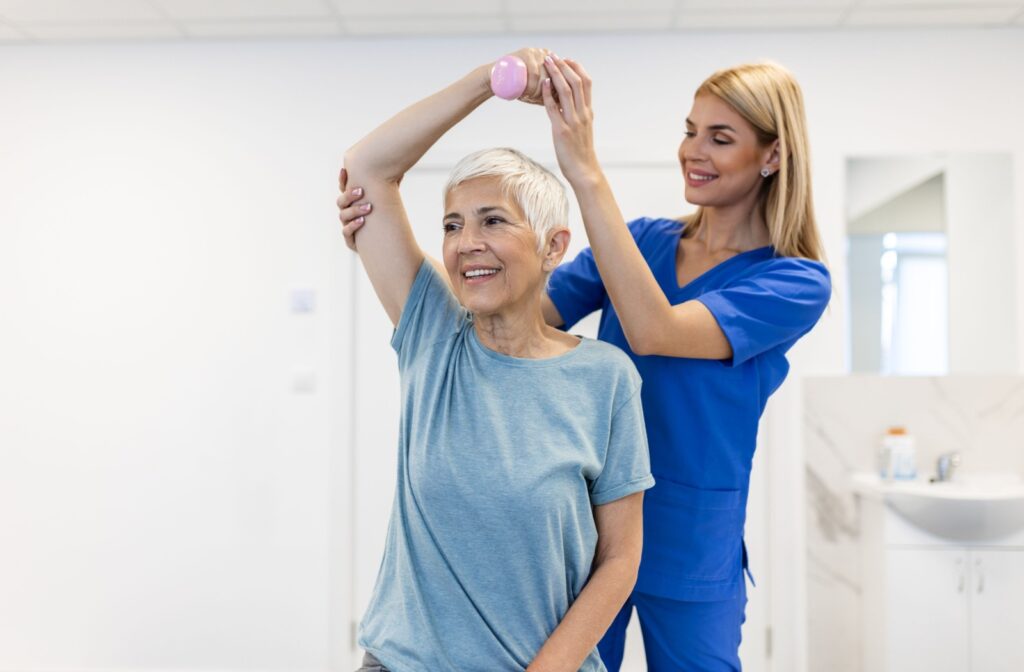As we age, the need for rehabilitation services can become a crucial part of maintaining independence and quality of life. Senior rehabilitation options are designed to help older adults regain their functional abilities after illness, injury, or surgery.
Among the most common types of senior rehabilitation are physical therapy, occupational therapy, and speech therapy. Each of these services focuses on different aspects of health and wellness, but all aim to improve mobility, enhance daily functioning, and increase independence.
1. Physical Therapy: Restoring Mobility and Function
Physical therapy (PT) is one of the most widely used rehabilitation services for seniors. It focuses on improving movement, alleviating pain, and preventing future injuries through exercises and hands-on treatments. PT is especially beneficial after surgeries, strokes, or injuries such as fractures or joint replacements. The goal for seniors who undergo physical therapy is to regain strength, balance, and mobility, making it easier to move around independently.
According to the American Physical Therapy Association (APTA), physical therapy for seniors often involves personalized exercise plans designed to improve strength, flexibility, and endurance. Therapists may use techniques like manual therapy, heat or cold therapy, electrical stimulation, and ultrasound to help alleviate pain and speed up recovery. PT can also include balance and gait training, which is crucial for preventing falls—one of the most significant risks for seniors.
Physical therapy is particularly beneficial for seniors recovering from knee or hip replacements. Research from Mayo Clinic suggests that physical therapy after joint replacement can significantly improve function and reduce the risk of complications, helping patients return to daily activities sooner.
2. Occupational Therapy: Improving Daily Living Skills
While physical therapy focuses on improving overall mobility, occupational therapy (OT) is aimed at helping seniors perform the activities of daily living (ADLs), such as bathing, dressing, cooking, and managing medications. OT is especially important for individuals who have lost some degree of independence due to an illness or injury, such as a stroke, arthritis, or dementia. The goal of occupational therapy is to enable seniors to live as independently and safely as possible.
According to the American Occupational Therapy Association (AOTA), occupational therapists work with seniors to modify their environment and use adaptive equipment to make daily tasks easier and safer. For example, an occupational therapist might recommend tools like grab bars in the bathroom, special utensils for eating, or a dressing aid to help with putting on clothes. Additionally, OT can teach seniors energy-saving techniques to make daily tasks less tiring.
OT can also aid older adults in regaining cognitive and sensory functions that may have been impaired after a stroke or traumatic brain injury. By using tailored exercises, therapists can help improve memory, attention, and problem-solving skills, all of which are crucial for maintaining independence.
3. Speech Therapy: Enhancing Communication and Swallowing Function
Speech therapy is another essential component of senior rehabilitation, particularly for individuals who have experienced neurological conditions like stroke or Parkinson’s disease, which can affect speech, language, and swallowing. Speech-language pathologists (SLPs) are trained to evaluate and treat communication and swallowing disorders, helping seniors regain the ability to speak, understand language, and eat safely.
According to the American Speech-Language-Hearing Association (ASHA), speech therapy for seniors can involve working on speech clarity, language comprehension, memory, and cognitive-communication skills. This can include exercises designed to strengthen the muscles used in speech and swallowing, as well as strategies to improve word-finding and sentence construction.

One of the most critical aspects of speech therapy for seniors is addressing dysphagia, or difficulty swallowing. Dysphagia can be caused by a number of health conditions, including stroke, Parkinson’s disease, or even age-related muscle weakness. ASHA notes that speech therapy can help seniors with dysphagia learn how to swallow more safely, reducing the risk of choking or aspiration pneumonia, a serious complication.
Speech therapy can also aid those with aphasia, a condition that affects a person’s ability to understand or produce language, often as a result of a stroke. According to Mayo Clinic, speech therapy can help individuals with aphasia improve their ability to communicate by using different techniques such as visual aids, exercises, and alternative communication devices.
When to Seek Rehabilitation Services for Seniors
Determining when to seek rehabilitation services for a family member can be a challenge, but there are several key indicators. If an older adult has experienced a fall, injury, stroke, or surgery, rehabilitation is often a necessary part of the recovery process. Similarly, if a loved one is struggling with daily activities like dressing, eating, or walking, occupational or physical therapy may be beneficial.
Moreover, if a senior is having difficulty speaking clearly or swallowing, a referral to a speech therapist is recommended. Early intervention is often key to preventing long-term complications and helping seniors regain their independence.
The Benefits of Senior Rehabilitation
Rehabilitation therapy offers numerous benefits for seniors, including:
Improved quality of life: Rehabilitation therapies are tailored to help regain essential physical and cognitive functions, allowing aging adults to live independently and participate in daily activities.
Prevention of future injuries: Physical therapy, particularly balance and strength training, can significantly reduce the risk of falls and fractures.
Enhanced communication skills: Speech therapy can help seniors with communication disorders regain the ability to express themselves clearly and effectively.
Increased independence: Occupational therapy enables seniors to perform tasks independently by recommending adaptive techniques and tools.
Thinking About Next Steps?
Physical, occupational, and speech therapy are vital components of senior rehabilitation. These services help seniors recover from injuries, surgeries, and medical conditions, while also improving their overall quality of life. By addressing the specific needs of each individual, rehabilitation therapies allow seniors to regain independence, enhance their mobility, and improve their ability to communicate and perform daily tasks.
If you or a loved one is in need of rehabilitation services, consider exploring the comprehensive care options available at Bethany Village. Their team of professionals is dedicated to providing personalized rehabilitation programs to meet each resident’s unique needs.

